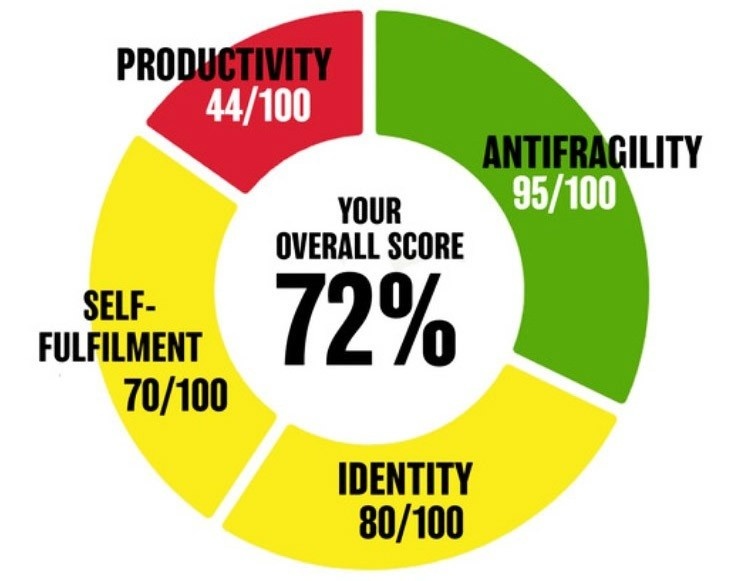SUMMARY
- In this episode I’m going to take you through five differences between leaders and managers. Number one, I like to think of leadership as more of a why activity and management as more of a how activity. Leaders think about why we should be doing something, while managers think about how we should do that.
- Number two relates to vision. A leader will be deciding, what’s the direction for the company? What’s the vision for the company? What is it that we’re trying to achieve? What are we moving towards? On the management side, when it comes to vision, vision is more about, well, how are we going to execute against that vision? How are we actually going to achieve it? How are we going to organize ourselves to make that happen? And how are we going to break whatever that vision is down into goals, chunk further down into actionable items that teams can work against?
- Number three. On the subject of teams, leaders are more about building teams, putting the teams together, finding top talent, and making sure that that talent stays with the company. Not just team talent, but also talent through partnerships or strategic alliances. Whereas managers, when it comes to teams, are more responsible for organizing and managing the team, its workflow, how it’s communicating and how it’s going about achieving the goals the team has set for itself.
- Number four relates to motivation and inspiration. Leaders tend to motivate and inspire in a universal way, rallying people towards that better future, often tapping into the values and the vision of the company and pointing to where it is that we want to be going. Whereas, managers tend to motivate and inspire by looking at the unique abilities of each person, their strengths and weaknesses.
- Last but not least, when it comes to strategy, this once again is leadership territory. We have our vision, where we want to be going and what it will look like when we get there, but the strategy is, how are we going to go about achieving that? What are the key things that we’re going to be doing? Not in a super detailed way, which is once again, how managers approach it, but just in the strong, building block way.
TRANSCRIPT
Ever wonder what the difference is between a leader versus a manager? Because there is a distinct difference. Have you ever wondered what it takes to become a better leader or to become a better manager? Well, today I’m going to take you through five differences between leaders and managers, and also take you through some of the pitfalls that you can avoid if you’re in either of those roles.
Hi, I’m Eric Partaker, and I coach CEOs, entrepreneurs, leaders, and individuals in peak performance, helping them close that gap between where they are and where they’d like to be, whether it’s for themselves or for their companies. Now, really understanding the difference between leadership and management was critical for me in my journey. It’s one thing to found a company, and I found that it was entirely another to scale the company. I noticed gaps in my leadership and in my management, which I voiced with my coach. That prompted him to suggest that I should go for the CEO of the Year Award here in the UK, which I thought was a little bit daunting, a little bit overkill for wanting to improve my leadership and management abilities. But it certainly forced me to take action I never would have dreamed of taking otherwise, all of which culminated in receiving that CEO of the Year Award.
So let’s get started on five things that separate leaders versus managers and give you some insights on how you can close the gap in either area. So number one, very, very simple, I like to think of leadership as more of a why activity and management as more of a how activity. So leaders think about why we should be doing something, again, managers think about how we should do that. Following on from that, number two relates to vision. A leader will be deciding, what’s the direction for the company? What’s the vision for the company? What is it that we’re trying to achieve? What are we moving towards? I’ll give you an example. When I was helping build Skype before we sold it to eBay, our vision there was a whole world can talk for free. It really inspired everyone in the company, including myself. But on the management side, when it comes to vision, vision is more about, well, how are we going to execute against that vision? How are we actually going to achieve it? How are we going to organize ourselves to make that happen? And how are we going to break whatever that vision is down into goals, chunk further down into actionable items that teams can work against?
Number three. On the subject of teams, leaders are more about building teams, putting the teams together, finding that top talent, the key people in each of those key positions, attracting that talent, making sure that that talent stays there with the company. And not just team talent, but also talent through partnerships or strategic alliances or coalitions that you might form. All of that is leadership realm or activity. Whereas managers, when it comes to teams, are more responsible for organizing and managing the team, its workflow, how it’s communicating and how it’s going about achieving whatever the goals are that this team has set for itself.
Number four relates to motivation and inspiration. Leaders tend to motivate and inspire in a universal way, rallying people towards that better future, often tapping into the values and the vision of the company and pointing to where it is that we want to be going. Whereas, managers tend to motivate and inspire by looking at, well, what are the unique abilities of each person, their strengths and weaknesses? How can I get them to capitalize on those strengths? How can I motivate them and inspire them to work on especially what they’re really good at with this particular task or project? How could I shore up any weaknesses on the team, anything that could get in the way of us achieving whatever, again, the goals are that the team has set for itself all in service of that vision?
So let’s start with leadership. Leadership is all about setting clear direction, first and foremost. What’s the vision of the company? What’s the vision of the team? If you can set a direction or a vision that goes beyond just the team itself, goes beyond just the benefit of the company and serves a much bigger purpose for the world or for a group of people, you will tap into incredible force within that group. I’ll give you a quick example. When I was helping build Skype before we sold it to eBay, our vision was the whole world could talk for free. Everybody knew that and everybody was excited to show up at work every day for that vision. We knew we were making the world a better place. When it comes to teams, leaders are very focused on building teams, finding who are the right people in all the right roles. They’re not necessarily focused on absolutely maximizing the output of that team, although they can, that’s more of a management activity, which we’ll be getting to in a moment. But first and foremost, when it comes to teams, they’re focused on, do we have the star players? Do we have the right talent in the right positions? And also making those tough calls about, do we need to change up the team? Do we need to get rid of some people perhaps, or bring new people into compliment any weaknesses that we might see on the team?
It’s not just about the internal teams, it’s also about, what are the correct strategic partnerships or alliances or who are people that we can be interacting with on a regular basis that will inform what we’re doing? All of these, especially the more external, become key leadership traits and activities. And when it comes to motivation and inspiration, this is also key leadership territory. Leaders need to be motivating and inspiring the group to a better future, to a better place. It has a strong present to future orientation, whereas a management orientation is more about optimizing that present moment.
Last but not least, when it comes to strategy, this once again is leadership territory. So we have our vision, where we want to be going and what it will look like when we get there, but the strategy is, how are we going to go about achieving that? What are the key things that we’re going to be doing? Not in a super detailed way, once again, that more management, but just in the strong, building block way. An example of strategic thinking would be looking at the industry and thinking through, well, what are the factors that this industry is competing on, and which of those factors might we eliminate? Which of those factors might we reduce from our competitive set of things that we could be investing in or choosing to compete on? What are factors that we could invest more in? What are new factors that we could create, that we know customers want but perhaps aren’t present within our competitors? This is the type of thinking that is typically in leadership territory.
When it comes to management, whereas the leader is deciding what that vision is going to be, the manager is responsible for executing that vision. Now, when I say leader and manager, often you can find leadership and management traits in the same person, but sometimes you find them as very distinct sets of people. But once again, when it comes to the vision, the manager’s role and vision is, how are we going to execute that vision? How are we going to make it happen? That includes breaking down that vision into actionable goals and making sure that that’s further broken down into subtasks that can be done by the various team members.
On the subject of team, when it comes to management, management’s responsible for organizing and managing that team. Is everyone clear what their objectives are? Do they have clear deadlines? Are they being followed up with? Is the manager helping them as they should, unblock any problems or issues that are arising in their path on their quest to complete whatever the goals are that they’ve set for themselves? One of the key management traits is to be able to capitalize on unique abilities within the team. As a team is working together, strengths and weaknesses emerge, and a manager needs to be able to spot those. They need to be able to quickly reshuffle if needed so that somebody can be really capitalizing on those strengths and any weaknesses in an individual are shored up by other team members or are taken care of by that individual, getting the right feedback or the training to correct those weaknesses themselves.
Not everyone will be strong in every single aspect of whatever it takes to complete a job, a manager knows this. Even a leader knows this. But a manager’s responsible for making sure that certainly those strengths and weaknesses are both capitalized and minimized. Last but not least, whereas a leader is focused on strategy, a manager is focused on execution, so what are the systems and the processes and things that we need in place to make sure the strategy is actually happening. So if your team isn’t moving as quickly as you would like, think about, do I have too much leadership going on, not enough management, too much thinking, not enough execution? And you may want to rebalance the people on that team.
Another pitfall comes with succession planning. A typical company structure will have a leader at the top and then, of course, a row of direct reports into that leader. Now, the leader is more of the why person and the direct reports tend to be more of the how people. So that also tends to be more the difference between leadership and management as well. And when a leader is looking to exit the business, they’re often tempted to bring up into the new role, the new say, CEO role, somebody that was reporting into them. While that’s possible, it doesn’t always work as well as the person thinks it’s going to work. Because once again, those people are typically how people, getting stuff done, executing, whereas the leader was more of the why person, where are we going, and and why is that important?
It’s often hard for someone who’s in that management role to suddenly transition into that leadership role. Not that it’s not possible, but that you should just be wary of it. It’s also a good reason why in succession planning, you may want to think about bringing in outside talent into that CEO role, for example, rather than just assuming that someone from below can assume that role. Again, not that it can’t happen, it absolutely can. But it’s just a caveat, something to be aware of given the different types of people and the different focuses for leadership versus management.




